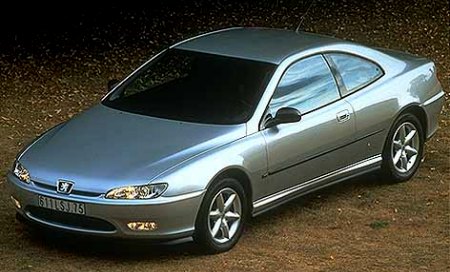 The close partnership
between French car maker Peugeot and famous Italian design house
Pininfarina produced many beautiful cars in the 1980s and 1990s,
including 205 Cabriolet, 306 Cabriolet, 405 and 605. However, the
definitive design must be 406 Coupe, which was also the last product of
their collaboration before Peugeot strengthening its own design
capability. History will remember this car as one of the Pininfarina's
best efforts, and to many it could be even a contender of the most
beautiful car ever made – something in the same breath as Jaguar
E-type, Lamborghini
Miura and Ferrari 308GTB!
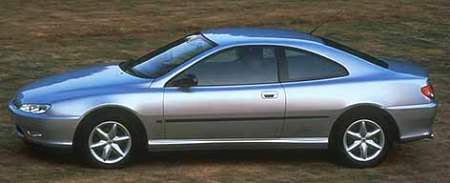 The 406 Coupe stunned the world with its premiere at Paris
motor show in 1996. Never before and after we had seen a coupe with
such a perfect proportion. Its streamline body shell was unusually
clean, thanks to ultra-slim headlamps, a minimalist fascia and a gently
flowing waist line. There were no sharp crease lines, twisted surfaces
or angular window perimeters. Every curve flows smoothly and meets
another surface with harmony. The size of its front and rear overhang
in relation to the wheelbase complied with golden ratio. The angles of
its windshield and fastback were just about perfect – any faster or
slower angles would worsen the marvelous aesthetic. Best of all design
elements was the fastback, where the rear window recessed slightly
between the C-pillars, effectively turning the latter into a pair of
subtle flying buttresses. This arrangement added visual lightness to
the rear view while preserving a sleek side profile. Brilliant!
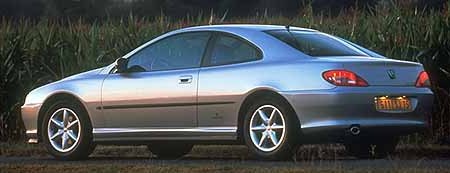 Even more brilliant was the fact that such a beautiful
proportion did not come at the expense of interior space and usability.
The 406
Coupe was renowned for offering genuine accommodation for 4 adults by
means of individual seats. Headroom and legroom at the back were
a little bit tighter than those offered on the 406 sedan, but they
could shame some 4-door sedans, such as the contemporary BMW 3-Series
and Audi A4! It also got a proper size luggage compartment. Admittedly,
the interior did not look as good as the exterior, because it had to
share the same dashboard and console with the 406 sedan to save cost.
Minor enhancements like chromed rims on main instruments and aluminum
gear knob had limited visual effect. Fortunately, the leather
upholstery and
sporty-looking
Recaro leather seats saved the game, especially if ordered with
rose-red
leather.
 The leather upholstery and the Pininfarina logo at the body
sides
served to remind you that the car was built by Pininfarina at its
factory in Turin. Based on the floorpan and mechanicals of 406 sedan,
Pininfarina added its own body shell and some bespoke components. Its
MacPherson strut front suspensions came straight from the sedan, but
the rear multi-link suspensions got new forged aluminum lateral control
arms to extend the rear track by 36 mm. Stiffer springs and dampers
lowered its ride height by 12 mm to improve handling. A 2-mode
electronic adaptive damping was optional while Brembo front brakes came
standard on powerful models. The transversely mounted powertrain was
pure 406 item, including 135 hp 2-liter 16V four-pot, 194 hp 3-liter
24V V6,
5-speed manual and 4-speed automatic transmission. The V6 could propel
the front-wheel-drive coupe from rest to 60 mph in 7.4 seconds and all
the way to a claimed 146 mph. Later on, the engine range expanded to
160 hp 2.2 petrol and 136 hp 2.2 HDi (which was the first diesel coupe
on the market), while the V6 was enhanced to 210 hp thanks to
re-engineering by Porsche.
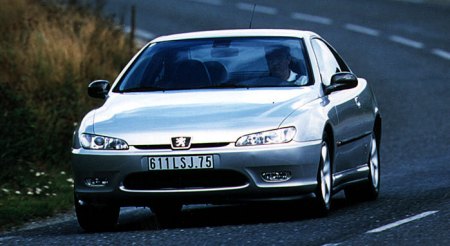 On the road, the 406 Coupe was more about refinement than
excitement. Its V6 excelled in smoothness and mid-range punch, the tall
gearing helped cruising refinement while the ride was supple on
B-roads. However, its chassis dynamics was still good enough to beat
the contemporary Mercedes CLK and ran neck to neck with BMW 328i Coupe
E36 (if not the later E46), thanks to the sounded basis of 406 sedan.
It steered responsively and accurately, cornered flatly, resisted
understeer strongly and stopped quickly. On the downside, the ZF
Servotronic power steering felt light and numb, whereas the French V6
was nowhere as sweet revving or sounding as Alfa V6. It wasn't
the best driver's car, but as a comfortable 4-seater coupe it was
unquestionably the best of its time, especially with that unrivaled
beauty.
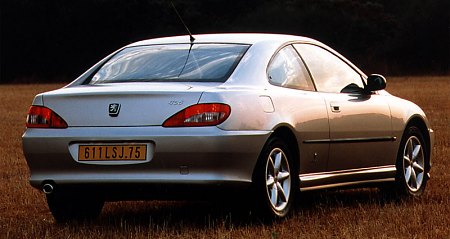 |